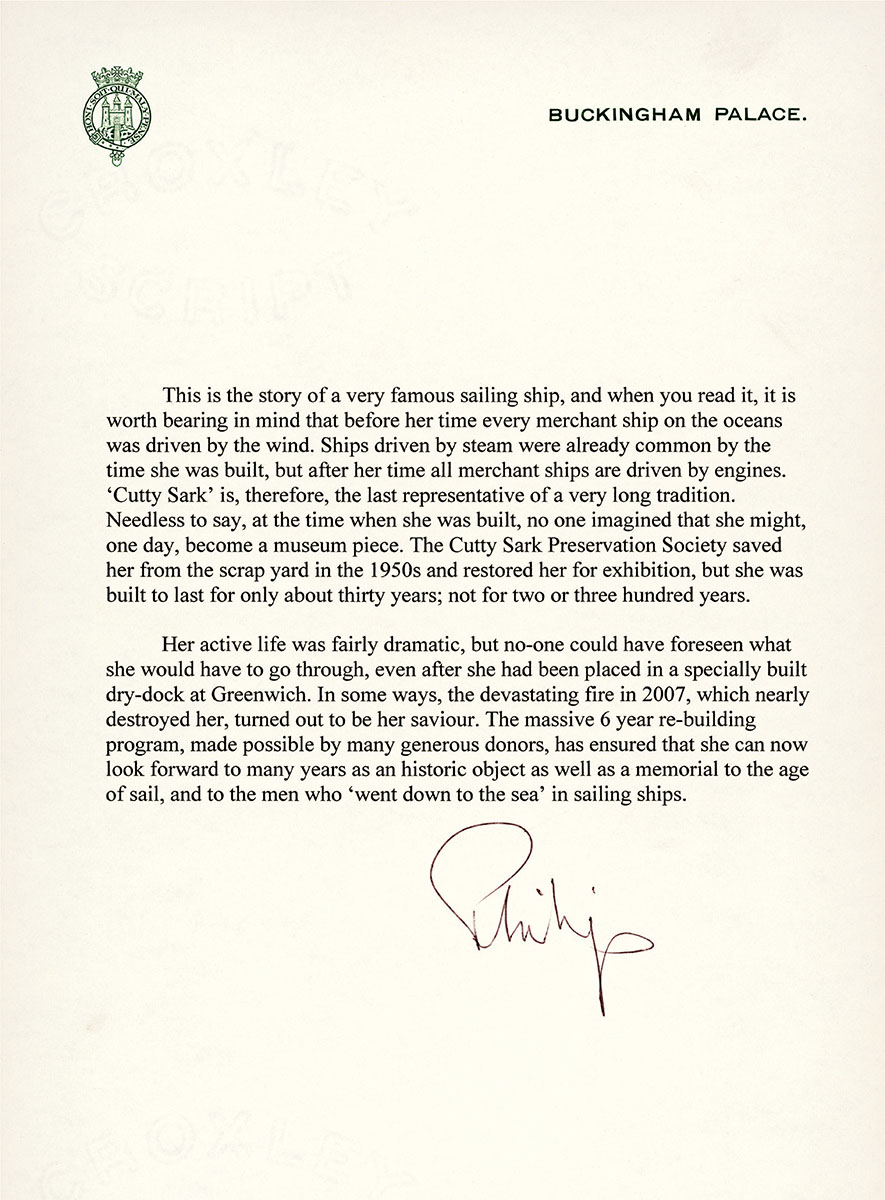
Cutty Sark at Sunset, by John Everett, early twentieth century.
A complete set of picture credits can be found .

Adlard Coles Nautical
An imprint of Bloomsbury Publishing Plc
50 Bedford Square
London WC1B 3DP
UK
www.bloomsbury.com
www.adlardcoles.com
This electronic edition published in 2018 by Bloomsbury Publishing Plc
National Maritime Museum, 2019
Published in association with Royal Museums Greenwich, the group name for the National Maritime Museum, Royal Observatory Greenwich, Queens House and Cutty Sark.
www.rmg.co.uk
All rights reserved
You may not copy, distribute, transmit, reproduce or otherwise make available this publication (or any part of it) in any form, or by any means (including without limitation electronic, digital, optical, mechanical, photocopying, printing, recording or otherwise), without the prior written permission of the publisher. Any person who does any unauthorised act in relation to this publication may be liable to criminal prosecution and civil claims for damages.
British Library Cataloguing in Publication Data:
A catalogue record for this book is available from the British Library.
ISBN: 978-1-4729-5953-9 (PB)
ISBN: 978-1-4729-5952-2 (eBook)
ISBN: 978-1-4729-5951-5 (ePDF)
To find out more about our authors and their books please visit www.bloomsbury.com where you will find extracts, author interviews and details of forthcoming events, and to be the first to hear about latest releases and special offers, sign up for our newsletter.
Contents
Foreword


HRH The Duke of Edinburgh and Commander Steele, Captain-Superintendent of HMS Worcester on the tween deck of Cutty Sark, 28th May 1953.

CUTTY SARK
DESIGNED BY
Hercules Linton for John Willis & Son
BUILT BY
Scott & Linton of Dumbarton, Scotland
LAUNCHED
22nd November 1869
PORT OF REGISTRY
London
REGISTRATION NUMBER
63557
HULL LENGTH
212 feet (65 metres)
EXTREME LENGTH
280 feet (86 metres)
BEAM
36 feet (11 metres)
DEPTH
22 feet (7 metres)
MAXIMUM RECORDED SPEED
17 knots (20 mph, 32.5 kph)
Preface
As the very last of the tea clippers, the importance of Cutty Sark to the nations history cannot be understated. The original owner of Cutty Sark, John Willis, commissioned her with the hope and expectation that she would become the fastest ship in the world. While he anticipated both generating sizeable financial profits and gaining acclaim, he certainly could not have expected her to have survived into the 21st century. I am sure that he would be delighted to see his prized ship treasured by people from all over the world, visited by millions and hailed as the finest example of the golden age of sailing.
As Director of Royal Museums Greenwich, I have been involved with Cutty Sark since my appointment in 2007. From her incredible 200612 Conservation Project, through to her award-winning visitor experience today, the ship continues to inspire new generations of visitors, and I am proud that so many of the visitors we welcome on board are families with young children. We continue to seek to engage all of our audiences, and a visit to Cutty Sark really does provide something for everyone she has become a must-see attraction and, more than ever before, truly lives up to her standing as the jewel in the crown of the Maritime Greenwich World Heritage Site.
The story of Cutty Sark did not end when she arrived in Greenwich more than sixty years ago. She has now welcomed more than 17 million visitors on board since opening to the public in 1957, including nearly two million since 2012. In 2019 Cutty Sark celebrates her 150th anniversary. For a ship designed to last no more than thirty years or so, this is a remarkable achievement and one that Royal Museums Greenwich will ensure is a milestone to remember. The continued support of our key stakeholders is vital to our ongoing work to preserve Cutty Sark for future generations and we look forward to welcoming new supporters throughout the ships 150th year.

Dr Kevin Fewster AM
Director, Royal Museums Greenwich

HM The Queen at the reopening of Cutty Sark, 25 April 2012

Introduction
On a November afternoon in 1869 a new ship slid down the slipway into the River Leven. Named Cutty Sark, she was built for one purpose to transport tea from China to London as quickly as possible.
Cutty Sark was launched in the middle of Britains imperial century. A great spirit of entrepreneurism had been backed by successive governments, the latest being the Liberal administration led, for the first time, by William Gladstone (Member of Parliament for Greenwich). Restrictions on trade, protectionism and high taxes were seen as the causes of poverty: free trade was the cure.

Fig. 1 Squally Weather, by Montague Dawson, c. 1958.
The defeat of the combined French and Spanish fleets at Trafalgar in 1805 is often regarded as the beginning of a century of supremacy at sea for Britain; but the boom in British seaborne trade began well before this and, indeed, underpinned the huge costs of the Royal Navy that protected it through the long French wars of 1793 to 1815. London, the port of registry for the new ship, had seen a succession of new docks built in the early 1800s, including the West India Docks (1802), London Docks (1805) and the East India Docks (1806). The Royal Victoria Docks had opened in 1855, and in the year before Cutty Sark was launched, the Millwall Docks had been completed.
Britain was unrivalled: Germany had yet to be united and the United States, although on the ascent, was some years away from challenging her. Materials poured in from across the Empire: jute and cotton from India, the Empires jewel in the crown, gold and copper from newly found deposits in Australia, sugar from the West Indies. Yet few, if any, of the hundreds of British and American tea clippers would have been built if it had not primarily been for events in the 35 years before























